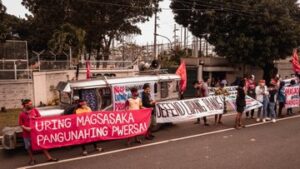Surviving Covid but not hardships


The year 2020 ended with the Philippines registering 747,000 cases of Covid-19 infections. Last January 4, the total number of recoveries was placed at 448,258 and deaths at 9,257. Most of those who recovered from the infection are under 49. Most of the patients who died were aged 60 and above.
During the pandemic, thousands of infected were declared “recoveries” by the Department of Health (DOH) weekly. This was under the DOH’s “Oplan Recovery” where all asymptomatic cases, as well as mild cases which did not develop further, were declared recovered after the requisite 14-day quarantine. Patients were either quarantined in government facilities or in their own houses. Added to their numbers are those who recovered in hospitals.
Those who have recovered did not undergo testing while in quarantine. This is because most of them would still test positive of the virus which could still be inside their bodies, according to the DoH. According to scientists, the virus is most contagious during the first 10 days of infection. About 90% of all infected, ages 59 below, recover from the disease.
They recover from the virus, but their hardships do not necessarily end there. Many are not able to emerge from the ordeal as they are buried in debt due to skyrocketing hospital bills. Many continue to experience symptoms and have difficulties going back to their old lives. They did not receive any aid, subsidy or support from the state when they were sick, much less when they became survivors.
In Metro Manila, private hospitals charge patients up to ₱30,000 to ₱40,000 a day, excluding payments for doctors’ professional fees. There were patients with mild symptoms who paid ₱570,000 for a 14-day hospital stay. Big hospitals charge up to ₱700,000 for a weeklong stay, even if the patient did not use oxygen or a ventilator.
Some symptoms stay with Covid survivors even after recovering. A number reported periodic fevers, cough, loss of taste and smell and breathing difficulty even weeks after they were declared “recovered.” There is no data on how many of Filipino Covid survivors are affected by this condition, which is called the “long Covid.”
“Sometimes, I still wake up gasping for breath,” Manny said, three months after he left quarantine. He has tested twice and has been in quarantine for two months before testing negative. To aid his recovery, he spent his remaining savings to buy vitamins and other supplements to boost his immunity.
Some survivors were unable to return to work. “I first tested positive and underwent quarantine in September,” Pinang, a worker, said. In December, she was still not able to return to work. Like in many companies, a negative Covid-19 test result was required in her workplace. “I’ve been tested five times and came out positive in each. In the end, she underwent a special test to ascertain if the virus in her body was still contagious. “I’ve yet to start working but I’m already neck-deep in debt,” she said. Each test costs about ₱1,500 to ₱8,000. PhilHealth only covers ₱3,409 and only if the tests are all carried out in a single laboratory or hospital.
“I considered resigning from that job,” Pinang said, “but it’s so difficult to find work elsewhere these days.” She fears that she won’t be able to claim her benefits at a time when she needs it most. The process of claiming benefits from the Social Security System is slow and tedious. “I have workmates who resigned last October. It’s already December but they are yet to receive their sickness benefit,” she added.










